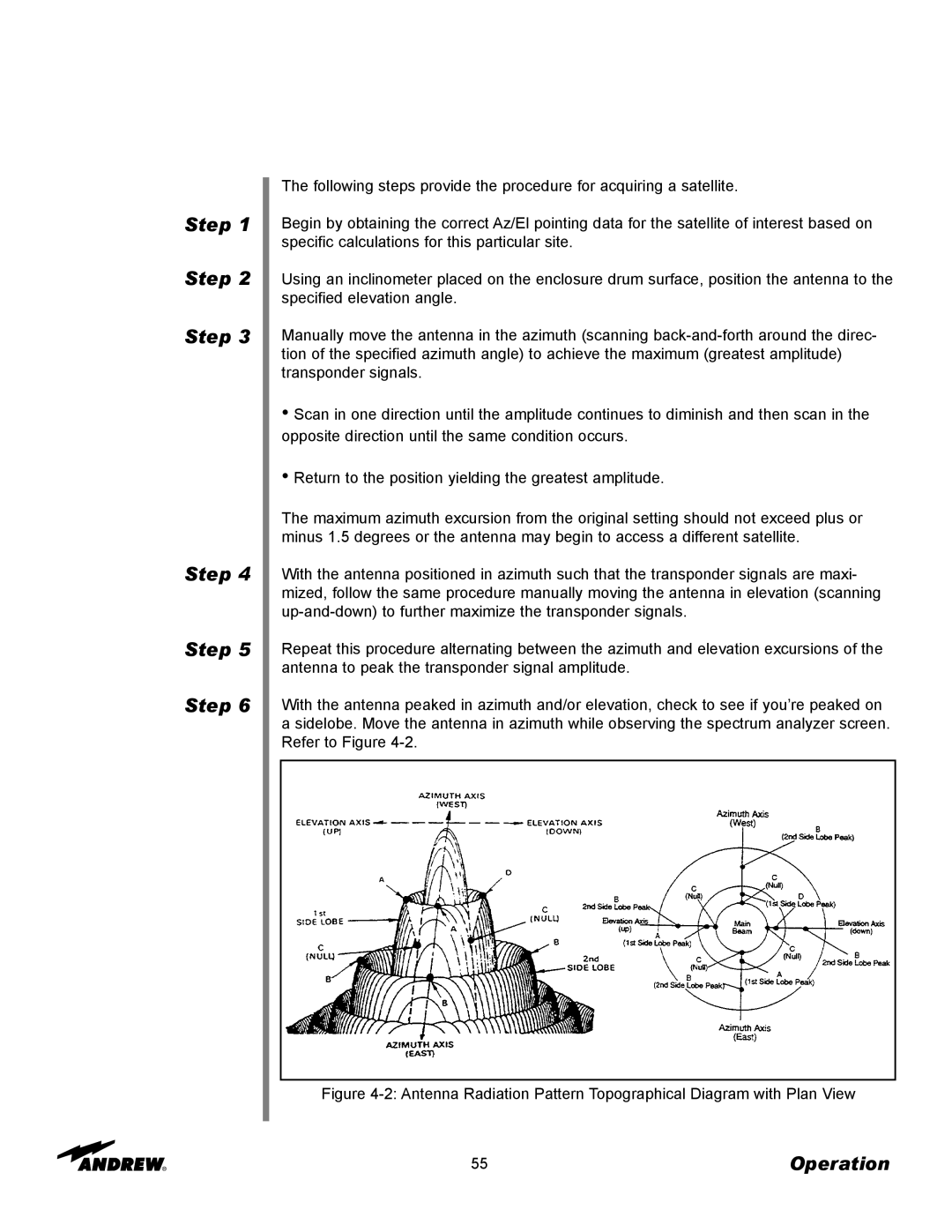
Step 1
Step 2
Step 3
Step 4
Step 5
Step 6
The following steps provide the procedure for acquiring a satellite.
Begin by obtaining the correct Az/El pointing data for the satellite of interest based on specific calculations for this particular site.
Using an inclinometer placed on the enclosure drum surface, position the antenna to the specified elevation angle.
Manually move the antenna in the azimuth (scanning
•Scan in one direction until the amplitude continues to diminish and then scan in the opposite direction until the same condition occurs.
•Return to the position yielding the greatest amplitude.
The maximum azimuth excursion from the original setting should not exceed plus or minus 1.5 degrees or the antenna may begin to access a different satellite.
With the antenna positioned in azimuth such that the transponder signals are maxi- mized, follow the same procedure manually moving the antenna in elevation (scanning
Repeat this procedure alternating between the azimuth and elevation excursions of the antenna to peak the transponder signal amplitude.
With the antenna peaked in azimuth and/or elevation, check to see if you’re peaked on a sidelobe. Move the antenna in azimuth while observing the spectrum analyzer screen. Refer to Figure
Figure 4-2: Antenna Radiation Pattern Topographical Diagram with Plan View
55 | Operation |
